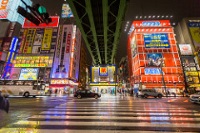
Tokyo's electronic wonderland has become world-renowned. In a small area west of Akihabara Station lies a bright cluster of electronics shops, manga and anime stores, and video game outlets. The suburb has been specialising in electrical equipment since the 1930s and is now regarded as the world's biggest and best electrical equipment enclave. Although the cheap and impressive technology draws many visitors, this is also a paradise for gamers, geeks, and anime and manga fans, with shops full of merchandise and numerous arcades. The arcades carry everything new and novel but also have many of the vintage games that are difficult to find these days. The neighbourhood is a riot of colourful advertising and a fun place to do some people watching, if nothing else. There are a lot of restaurants and fast food joints to try out and some funky eateries. Akihabara is also an entertaining area to stroll around at night, when everything is lit up in neon.
Website : www.akiba.or.jp/english/index.html
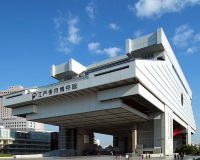
Tokyo's museum dedicated to detailing the city's history, art, culture, and architecture through the medium of visual displays is an impressive attraction not to be missed. Edo was the old name for Tokyo when the country came under the rule of the warlord, Tokugawa Ieyasu. Exhibits include a replica of an ancient Kabuki theatre, maps, photographs, and portrayals of the lives of the city's merchants, craftsmen, and townspeople in days gone by. It is a huge museum which takes a few hours to explore properly and should captivate people of all ages. There are numerous interactive exhibits and many intricate models with such wonderful detail that binoculars are provided for visitors to better appreciate them. Traditional performances are held in the recreated theatre, which is not the only historic building to be recreated life-size. If you are interested in Tokyo's general history then this is the best museum to start with to get an overview of the city's development. Volunteers give regular free tours of the museum and many of them speak fluent English. There is good English signposting and information throughout the museum.
Address : 1-4-1 Yokoami, Sumida-ku
Website : www.edo-tokyo-museum.or.jp
Telephone : +81 3 3626 9974
Opening times : 9.30am - 5.30pm. Saturdays: 9.30am - 7.30pm. Closed on Mondays.
Admission : JPY 600
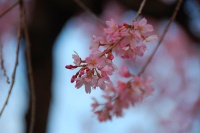
Inokashira Park is a tranquil oasis amid the bustle of Japan's capital city and is often lauded by locals and visitors as the best urban park in Japan. The park contains a temple dedicated to the goddess of love, a petting zoo, and an aquarium, and is lively with musicians, artists, and street performers. There are frequent free magic shows and other entertainments for kids to enjoy. One of the more popular attractions in Inokashira Park is the Ghibli Museum, featuring displays on popular animated films from the studio of the same name, including Spirited Away and Howl's Moving Castle. The park is beautiful all year round but the best time to visit is in spring and autumn when the colours are at their most magnificent. Inokashira Park gets very crowded in the spring when the cherry blossoms are flowering. It's best to arrive early in the morning to avoid the crowds and make the most of the spectacle. Possibly the best activity to enjoy in Inokashira is a drift in one of the swan-shaped paddle boats around the lake. Floating along in the reflective water is particularly romantic in March and April when the trees overhanging the water are in full bloom. The park is a must for anybody visiting Tokyo.
Address : Gotenyama 1-chome, Kichijoji-Minami-cho 1-chome, Musashino City
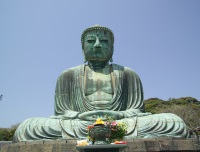
The city of Kamakura, about 30 miles (50km) southwest of Tokyo, at the base of the Miura Peninsula, was the political powerhouse of Japan in the middle ages and the seat of government for most of the 13th century. Because of its historic importance, Kamakura boasts numerous monuments, temples, and shrines which are of interest to sightseeing tourists. As an added bonus, the city sports some sandy beaches and good hiking trails in the nearby wooded hills so that a day or two can be spent very happily in the city enjoying both the natural and historical attractions. Kamakura's many sights are too numerous to detail individually, but most important of them all is the Great Buddha. This bronze statue of the seated Amida Buddha is located in the grounds of the Kotokuin Temple and, standing at almost 44ft (13,35m) high, it is the second largest Buddha statue in Japan after that found in the Todaiji Temple in Nara. The Kamakura Great Buddha was cast in 1252 and was originally contained in the temple hall. A tidal wave (tsunami) washed away the temple in the late 15th century, but the Buddha prevailed and has since stood triumphantly in the open. Kamakura is a very popular daytrip from Tokyo, but many visitors will find that they want to spend at least one night in the city to fully appreciate all it has to offer.
Website : www.kamakuratoday.com/e
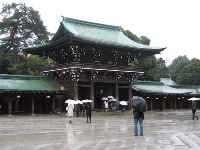
Close to the Harajuku Station, the Meiji Jingu is an easily accessible shrine and worthwhile stop for tourists in Tokyo. Built in homage to the Emperor Meiji and his wife, the Empress Shoken, this monument is located in a 175 acre (70ha) evergreen forest and consists of two main areas. In the inner Naien, there is a garden featuring shrine buildings and a treasure museum holding articles belonging to the Emperor and Empress. In the outer cloister, the Gaien, the Meiji Memorial Picture Gallery presents murals depicting significant events during the Meiji rule. It also consists of a sports arena, the National Stadium, and the Meiji Memorial Hall, which was an important political meeting place during the Meiji Era. Today, traditional Shinto weddings are held in the hall and newcomers to Japan are always intrigued when witnessing the unique Shinto wedding procession. The lush grounds are wonderful to explore early in the morning when they are peaceful and empty, and the gardens provide sanctuary from the busy city at any time of day. There is a lot to see and do in the complex, which can easily take a few hours to explore properly and should delight the whole family.
Address : 1-1 Yoyogi-Kamizono-cho, Shibuya-ku
Website : www.meijijingu.or.jp/english/
Opening times : Daily from sunrise to sunset. Hours vary month to month.
The dormant volcano of Mount Fuji, 62 miles (100km) southwest of Tokyo, has been revered since ancient times and no exploration of Japan is complete without visiting the mountain that is known fondly as 'Fuji-san' by the locals. Its symmetrical 12,388-foot (3,776m) snow-crowned summit has become as symbolic of Japan as the country's own flag, featuring in poetry and art through the ages and considered a holy site in Japanese culture. The mountain, which is the highest in Japan, has many historical and mythological associations; for instance, ancient samurai used the base of the mountain as a remote training area, near the present day town of Gotemba. The closest town to the volcano is Fuji Yoshida, from which buses leave frequently for Fuji's 'fifth stage' (the usual jumping-off point for hikes up the mountain) from outside the train station. There are six trails to the summit, of which the Kawaguchiko Trail is the easiest, being quite manageable even for children and the elderly as long as they have stamina and good shoes. Overnight huts are available for those wanting to stay a night or two on the mountain. The official climbing season is from 1 July to the end of August as in winter snow makes the ascent too dangerous.
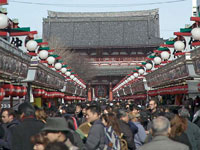
The Asakusa neighbourhood of Tokyo draws visitors to admire the city's oldest temple, Senso-ji, founded in 628 AD with a quaint legend attached to it. The story goes that two young brothers fishing in the nearby river netted a golden image of Kannon, the Buddhist goddess of mercy, and the statue kept turning up in their nets no matter how many times they threw it back. The brothers were inspired to enshrine it in a temple dedicated to the deity. The statuette is still inside, but never shown to the public, though pilgrims flock here every day seeking the favour of the goddess. There are also numerous festivals associated with the shrine, and a hugely popular firework display is held on the Sumida River every summer. Tourists enjoy the visit to the temple mainly because the approach is a colourful pedestrian lane, Nakamise Dori, lined with shops and souvenir stalls. The area has become touristy but it is still a stronghold for ancient traditions and a wonderful place to do some people watching. For many tourists the temple is one of the highlights of a visit to Tokyo; the temple complex is usually bustling with activity and there is lots to see and do. Nearby, the Demboin Garden is a good spot to grab a break from the city crowds.
Address : 2-3-1 Asakusa Taito-ku, Shitamachi (downtown)
Opening times : Main Hall: 6am to 5pm (from 6.30am between October and March). Temple grounds are always open.
Admission : Free
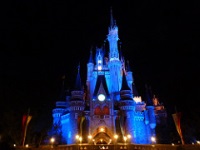
There is plenty of fun to be had for the young and young at heart at Tokyo's Disney Resort, in many ways virtually a carbon copy of the theme park found in California in the United States. The Tokyo amusement park was opened in 1983 and it has gradually developed a character of its own, growing into one of the most popular amusement parks in the world and considered by many to have surpassed its American predecessor. The park now has many unique attractions and an interesting fusion of American and Japanese culture, but you will still find all the old favourites. The resort consists of Disneyland Park and DisneySea Park, along with several hotels. It is divided into seven different themed lands: World Bazaar, Adventureland, Westernland, Critter Country, Fantasyland, Toontown, and Tomorrowland. Visitors can expect attractions like the Jungle Cruise, Space Mountain, Splash Mountain and many more, which are all included on this huge site, and are very well-maintained and presented. The Tokyo park is known for its cleanliness and smooth operations but visitors should expect crowds and come prepared for some queuing. The premier attraction for kids in Tokyo, the Disney resort is unmissable for families.
Website : www.tokyodisneyresort.co.jp
Transport : The park is reached via the JR Keiyo Line or JR Musashino Line from Tokyo Station; disembark at Maihama Station (South Exit) where there is a Disneyland Welcome Centre.
Opening times : Check website for details, as hours vary according to season and day of the week. Generally open daily 8am-10pm with shorter hours in winter.
Admission : There are several ticket options, including multi-day passports that allow entry to both parks. Check the official website for details.
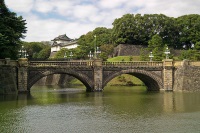
Japan's Imperial Palace is regarded as the heart and soul of Tokyo, standing on a huge site that still bears the remains of Edo Castle, stronghold of the Tokugawa Shogunate. The present palace was completed in 1888 and is still home to the emperor of Japan. The palace is off-limits but its grounds and surrounds provide a much-needed green open space for the city with Higashi Gyoen (East Garden), site of the Edo Castle keep, open to the public. On January 2nd and December 23rd each year, visitors are able to enter the inner grounds and see the Imperial family make public appearances from the balcony. Guided tours of the palace are offered but only in Japanese, although an English pamphlet and audio guide are provided. These tours must be reserved in advance through the Imperial Household Agency. Be sure to take along your passport when you go to reserve a spot. In spring, the gardens are awash with colour when the cherry blossoms are in bloom, particularly along the castle moat. The Imperial Palace is bustling throughout the year, with lots to see including a few small museums, some wonderful landscaping, and many symbolic ornamental touches like the plants from every prefecture dotted around the palace.
Opening times : East Garden is closed on Mondays and Fridays. Otherwise it is open daily 9am-4pm (until 3:30pm between November and February). Gardens closed from 28 December to 3 January and when Imperial Court functions take place.
Admission : Free
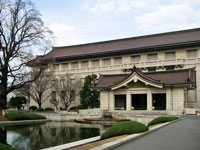
Close to Ueno Station and enclosed in the beautiful, spacious park of the same name, the National Museum is host to the largest collection of Japanese art in the world. Exhibits range from antique kimonos and delicate pottery to woodblock prints and archaeological finds. The vast collection is displayed on a rotating basis with at least 4,000 artefacts visible at any time, so the museum always has something new to offer. The museum consists of five different buildings containing numerous galleries, so one needs sufficient time to do it justice. The Imperial Gift Park is a lovely place to enjoy a stroll, with big ponds and shaded areas to rest; the grounds also contain some other cultural institutions, including a zoo, the Metropolitan Art Museum, Bunka Kaikan Cultural Hall, the Western Art Museum, and the National Science Museum. There should be something here to interest the whole family and all the educational attractions can easily fill a whole day of sightseeing.
Address : 13-9 Ueno Park,Taito-ku
Website : www.tnm.go.jp
Telephone : (0)3 3822 1111
Opening times : Daily 9:30am to 5pm, depending on season; closed Mondays. Closing times vary with the seasons, visitors are advised to check before arrival.
Admission : JPY 620 (adults), JPY 410 (students), free for scholars.
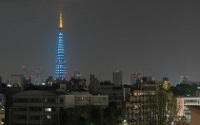
The Tokyo Tower is modelled in the vein of the Eiffel Tower in France, only in true Japanese style, it is more colourful and serves a technological purpose. Tokyo Tower functions chiefly as a television and radio antenna but it is also Tokyo's premier landmark and a proud symbol of Japanese culture, celebrating the country's industrial and technological success. At 1,091 feet (332m) it is the tallest structure in Tokyo and a great vantage point from which to take in the city. There are two observation decks in the tower, both with magnificent 360 degree panoramic views. Admiring the city from this high vantage point is only one aspect of the tourist's experience at the tower, however. At the base of the tower, tucked snugly under its 'legs', is the four-storey FootTown. Inside FootTown visitors will find shops, restaurants, a wax museum, the Guinness Book of World Records Museum, an aquarium, and the Mysterious Walking Zone, a fascinating display of holographic technology and imagery. The top floor of FootTown is an interactive art gallery, featuring optical illusions which can be manipulated by visitors. There is lots to see and do and the Tokyo Tower should delight people of all ages.
Address : 4-2-8 Shiba-Koen, Minato-ku
Website : www.tokyotower.co.jp/english/
Telephone : 03 3433 5111
Opening times : Daily 9am-11pm. The Special Observatory is currently closed for renovations.
Admission : Main Observatory: JPY 900 Adults; JPY 500 junior high and primary school students; JPY 400 children.
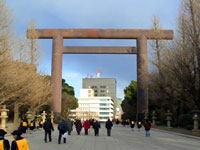
To the north of the Imperial Palace lies the controversial Yasukuni Shrine, built long ago to commemorate those Japanese who died in war and now regarded as home to the souls of about two and a half million who perished in conflict, mostly in the Pacific War of World War II. Japanese soldiers fought in the knowledge that their spirits would find rest and honour at Yasukuni in the afterlife. The shrine has caused controversy for various political reasons over the years since it was built in 1869 in honour of supporters of the emperor who were killed in the run up to the Meiji Restoration. More recently, with regard to the country's constitution that requires the separation of state and religion, cabinet ministers have been criticised for attending anniversaries of Japan's defeat in World War II held at the shrine. The shrine is confined behind a huge steel torii (gate), opening onto a long avenue lined with gingko and cherry trees. The Worship Hall itself is a simple Shinto style building. North of the shrine is the Yushukan Museum, containing war memorabilia, some of which is disturbing and thought-provoking such as the human torpedo and kamikaze suicide attack plane. The shrine and museum will be fascinating for those interested in military history.
Address : 3-1-1 Kadunkita, Chiyoda-ku
Website : www.yasukuni.or.jp
Telephone : (03) 3261 8326
Transport : Subway to Kudanshita Station
Opening times : Shrine open 24 hours daily. Museum open daily 9am-4:30pm.
Admission : JPY 800 (adults); concessions available.
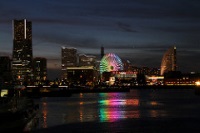
While visiting Japan's largest city of Tokyo, it is quick and easy to pay a visit to the country's second biggest metropolis too. Yokohama can be reached in less than 30 minutes by train from Tokyo, lying south of the capital. The main reason for visiting Yokohama is to marvel at its futuristic new city centre and perhaps take a stroll through Japan's largest Chinatown. Yokohama's Chinatown, entered through four colourful gates and teeming with restaurants and shops, was developed after the city became one of the first Japanese ports to be opened to foreign trade after generations of isolation ended in 1859. Chinese traders flocked to the city, establishing a cultural neighbourhood. Minato Mirai is the new central city area around the harbour, characterised by the Landmark Tower, rising to 971ft (296m). Visitors can ride to the tower's observation deck in the world's second fastest elevator, travelling at 41ft (13m) a second, for a view that on a clear day stretches as far as Mount Fuji. The city also boasts the Yokohama Marine Tower, the tallest inland lighthouse in the world. The city is a commercial hub with wonderful shopping opportunities, restaurants, and a fun nightlife.
Website : www.city.yokohama.lg.jp/
Transport : Toyoko Line from Shibuya, JR Tokaido Line or JR Yokosuka Line from Tokyo or Shinagawa Station

Travel Guide powered by Word Travels, copyright © 2023 Globe Media Ltd. By its very nature information in this travel guide is subject to change at short notice and travellers are urged to verify information on which they're relying with the relevant authorities. Neither Globe Media Ltd nor Travel Vogue can accept any responsibility for any loss or inconvenience to any person as a result of information contained above.